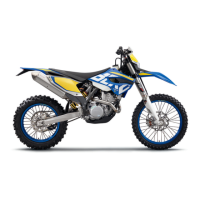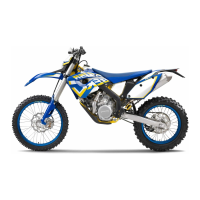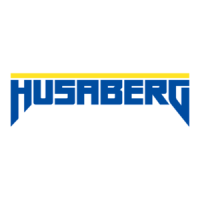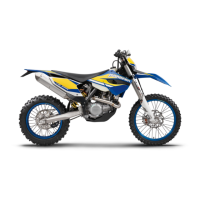What to do if the lights are not working on HUSABERG FE 250 USA 2014 Motorcycle?
- OoalexanderSep 12, 2025
If the high beam, low beam, parking light, tail light, and license plate lamp are not working on your HUSABERG Motorcycle, it is likely that Fuse 3 is blown. Replace the fuse.





